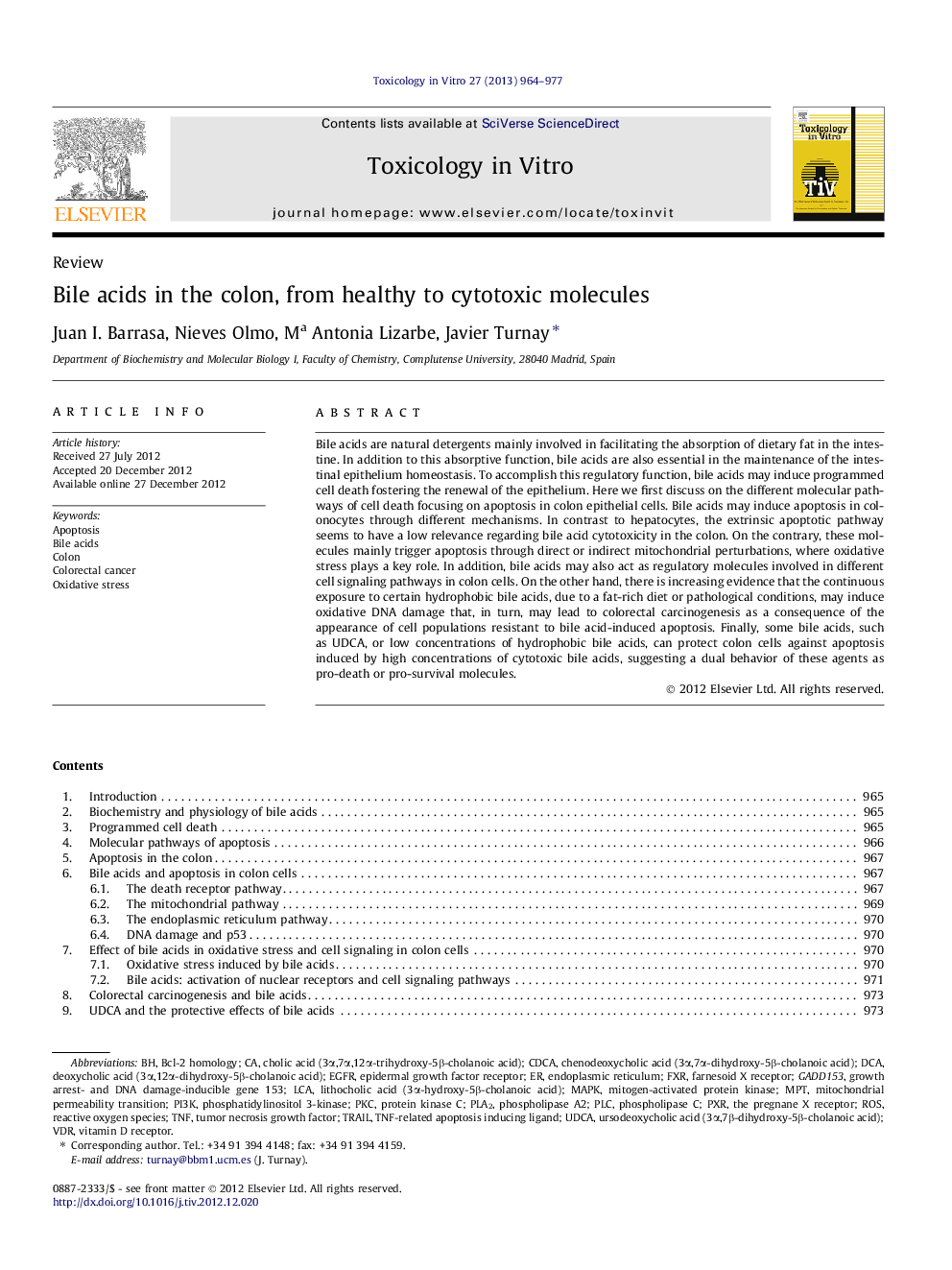| کد مقاله | کد نشریه | سال انتشار | مقاله انگلیسی | نسخه تمام متن |
|---|---|---|---|---|
| 5862554 | 1133780 | 2013 | 14 صفحه PDF | دانلود رایگان |
عنوان انگلیسی مقاله ISI
Bile acids in the colon, from healthy to cytotoxic molecules
ترجمه فارسی عنوان
اسیدهای صفراوی در روده بزرگ، از مولکول های سالم به سیتوتوکسیک
دانلود مقاله + سفارش ترجمه
دانلود مقاله ISI انگلیسی
رایگان برای ایرانیان
کلمات کلیدی
PXRPLA2CDCAPKCFXRPLCVDRMPTUDCAGADD153PI3KTNFDCAEGFRfarnesoid X receptor - Farnesoid X گیرندهMAPK - MAPKROS - ROSphospholipase A2 - آنزیم فسفولیپاز A2 LCA - ارزیابی چرخه حیاتBile acids - اسیدهای صفراویmitochondrial permeability transition - انتقال نفوذپذیری میتوکندریOxidative stress - تنش اکسیداتیوApoptosis - خزان یاختهایColorectal cancer - سرطان روده بزرگendoplasmic reticulum - شبکه آندوپلاسمی Phosphatidylinositol 3-kinase - فسفاتیدیلینواستیل 3-کینازphospholipase C - فسفولیپاز CTRAIL - قطارTNF-related apoptosis inducing ligand - لیگاند القاء آپوپتوز مرتبط با TNFBcl-2 homology - همولوگ Bcl-2Protein kinase C - پروتئین کیناز سیmitogen-activated protein kinase - پروتئین کیناز فعال با mitogenColon - کولونReactive oxygen species - گونههای فعال اکسیژنEpidermal growth factor receptor - گیرنده فاکتور رشد اپیدرمالVitamin D receptor - گیرنده ویتامین D
موضوعات مرتبط
علوم زیستی و بیوفناوری
علوم محیط زیست
بهداشت، سم شناسی و جهش زایی
چکیده انگلیسی
Bile acids are natural detergents mainly involved in facilitating the absorption of dietary fat in the intestine. In addition to this absorptive function, bile acids are also essential in the maintenance of the intestinal epithelium homeostasis. To accomplish this regulatory function, bile acids may induce programmed cell death fostering the renewal of the epithelium. Here we first discuss on the different molecular pathways of cell death focusing on apoptosis in colon epithelial cells. Bile acids may induce apoptosis in colonocytes through different mechanisms. In contrast to hepatocytes, the extrinsic apoptotic pathway seems to have a low relevance regarding bile acid cytotoxicity in the colon. On the contrary, these molecules mainly trigger apoptosis through direct or indirect mitochondrial perturbations, where oxidative stress plays a key role. In addition, bile acids may also act as regulatory molecules involved in different cell signaling pathways in colon cells. On the other hand, there is increasing evidence that the continuous exposure to certain hydrophobic bile acids, due to a fat-rich diet or pathological conditions, may induce oxidative DNA damage that, in turn, may lead to colorectal carcinogenesis as a consequence of the appearance of cell populations resistant to bile acid-induced apoptosis. Finally, some bile acids, such as UDCA, or low concentrations of hydrophobic bile acids, can protect colon cells against apoptosis induced by high concentrations of cytotoxic bile acids, suggesting a dual behavior of these agents as pro-death or pro-survival molecules.
ناشر
Database: Elsevier - ScienceDirect (ساینس دایرکت)
Journal: Toxicology in Vitro - Volume 27, Issue 2, March 2013, Pages 964-977
Journal: Toxicology in Vitro - Volume 27, Issue 2, March 2013, Pages 964-977
نویسندگان
Juan I. Barrasa, Nieves Olmo, Ma Antonia Lizarbe, Javier Turnay,
